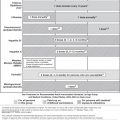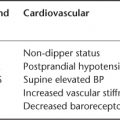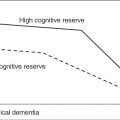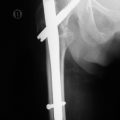Communication
Effective communication allows an individual to convey successfully a message or meaning to another person and for that meaning to be correctly interpreted. Communication is one of the most fundamental characteristics of higher cognitive functioning and is dependent upon symbolic encoding, either in sounds, script or gesture. These complex acts are supported by virtually every aspect of brain function, with the afferent sensory stimuli being processed through associated regions, being integrated with stored memories and emotions along with immediate factors relating to attention, arousal and motivation which can stimulate a verbal or gestural response governed by different environmental and behavioural conditioning.
In its simplest form, communication requires one individual to be able to receive a message from another, either auditorily or visually, to interpret this message and to generate an appropriate response which is encoded into sounds, gestures or written letters in order to respond. Thus, the term ‘language’ refers to a code used to represent and communicate ideas and feelings. Language may be verbal or non-verbal, for example, written words, sign language, gestures. However, all modes are governed by rules shared within cultures. Speech is the verbal expression of language which comprises of the meaning (semantics) and sounds (phonology). Language can also be expressed through writing using symbols (as in letters) or agreed body movements for signs (e.g. sign language or gestures).
Ageing and Communication
There is evidence that language is an inherent capacity and that the neural basis for language is not only a dynamic process but prewired biologically.1 Researchers have investigated the capacity for language in different animal species and although some animals, particularly apes, can be taught to use symbols, humans appear to be specifically, physically and neurologically adapted for the integrated neurocognitive requirements for complex speech and language. Much work has been done on the development of language from birth during its rapid acquisition stage. Less work has been conducted examining the effects of ageing on communication processes later in life.2 However, it is clear that changes in vision and hearing, laryngeal function and cognitive function impact upon the effectiveness of communication. For example, less cognitive agility may reduce the facility to make inferences when complex language structures are used; the use of stereotypical phrases to fill in language when original vocabulary is less easily accessed and a slight deepening and huskiness in the voice may all be associated with normal communication changes associated with age. Many of these will be subtle and will not be evident in casual conversation.3
The impact of age-associated changes on the sensory systems is likely to have a profound effect on communication, but it is difficult to define exactly when the normal deterioration in hearing and eyesight becomes pathological and affects communication more extremely.4
Hearing
The prevalence of hearing impairment depends upon the criteria used to define it. However, many studies have indicated that between 30 and 40% of older people (over the age of 70 years) have a hearing loss of 25 dB hearing level. This level would affect the ability to hear normal conversation. Although men are more likely to have more severe hearing level loss than women, increasing age is by far the major determinant in predicting who is likely to have a hearing difficulty. A decrease in overall hearing acuity is often accompanied by disproportionate difficulty in discriminating higher frequency sounds and a lowering of the threshold at which sounds cause discomfort. These age-related changes are called presbycusis. Distortions of the speech signal result in misinterpretation and misunderstanding, which have implications for easy and effective communication and also cognition and mood.
Hearing loss can be profoundly isolating and reduce enjoyment in many activities, and is frequently associated with depression.5 For many elderly individuals, communication problems and related psychosocial difficulties resulting from hearing impairments could be reduced significantly by the use of hearing aids.6 However, a high proportion of those provided with hearing aids do not use them. One study indicated that only 21% of hearing-impaired elderly individuals provided with a hearing aid used them. Improved usage is associated with an education programme accompanied by the provision of a hearing aid. This should include information on how physically to manipulate the aid itself in addition to giving encouragement to develop the necessary tolerance in order to become accustomed to the different auditory input provided through a hearing aid. Thus, provision of a hearing aid is not an end in itself and is unlikely to lead to successful improvement in communication.7
Vision
This chapter would be incomplete without mentioning the contribution of vision to communication but, as this is less central, only an outline is given. Visual changes occur with age and affect depth perception, colour sensitivity, the ability to focus and the ability to adapt to changes in lighting. In addition, a number of visual impairments, such as cataract, glaucoma and macular degeneration, are associated with increasing age. Vision obviously affects reading and writing, but reduced ability to see gestures and facial expressions or to recognize people can impair the communication process in a more subtle manner.8 One of the concerns to speech and language therapists is that visual and hearing impairments can profoundly affect an individual’s response to rehabilitation of acquired dysphasia or dysarthria. Detailed speech and language assessments usually require reasonable vision and hearing; hence patients with defects in these may be more difficult not only to treat but also to evaluate and diagnose.
Cognition
Age-related cognitive decline is examined in depth elsewhere in this book.
There is a close relationship between thought and language and it has been suggested that various types of cognitive decline, including specific dementia types, lead to fundamentally different communicative symptoms. However, with cognitive decline, pragmatic dysfunction leading to incompetence in communicative processes is more frequently evident than linguistic difficulty. Thus, a person may have appropriate language structure, but may use the language in a way that does not communicate effectively, either by ignoring the context, lacking coherence or showing difficulty in sticking to a topic.
Studies have indicated that certain cognitive abilities, such as accessing vocabulary, may be insensitive to age-related changes until the age of 75–85 years.9 The main difficulty in normal ageing is associated with slowing of processing time and less resistance to distraction.10 However the prevalence of dementia increases with age, rising from around 1% at age 65 years to 35% at 85 years. The rate of increase for both genders is marked throughout ageing.11 It is estimated that 30% of those with dementia do not get a diagnosis, particularly in the young onset group (aged under 65 years) who are usually diagnosed late in the course of their dementia.12
Dementia can be seen as going through three stages, progressing from mild, through moderate to severe loss of function. Language can be affected at each stage, causing difficulties in understanding and expression and may, along with memory problems, be an early indicator of the condition. Individuals may demonstrate word-finding difficulties, particularly for objects and people’s names, and use empty phrases (i.e. without meaning). Additionally, the individual has difficulty in focusing on a topic of conversation and may start in the middle of a topic, with no reference to the listener’s knowledge or understanding of the subject. This difficulty in providing relevant information for the listener causes communication to break down and is frequently misunderstood by the communication partner.13, 14
Persons with age-related cognitive disorders affecting communication can be assisted by speech and language therapists. The therapist will undertake a differential communication assessment and advise the patient and carers on strategies to improve effectiveness of interaction. These strategies include reducing the use of pronouns such as ‘he’ or ‘she’ and referring to people or things by name; avoiding open-ended questions, for example, giving definite options; encouraging gesture and using communication prompts such as pictures and charts.15
A review of recent research indicates that multi-modality intervention that included physical exercise, volunteer work and exercises to help memory and language can have beneficial effects provided that participants are physically able to complete the intervention. The training of caregivers of patients with Alzheimer’s disease about the disease, communication strategies and the use of memory books and wallets can help to improve their communication interactions with patients with Alzheimer’s disease.
Motor Speech
The power and range of movement may be affected by age; this can subtly change respiration, phonation and articulation, allowing the listener frequently to identify a speaker that they cannot see as being older or younger. The voice becomes less robust with the onset of tremulous, frail or a thinned quality. It is possible that these changes are associated with some adaptation of the laryngeal cartilages, thickening of the vocal folds and reduction in respiratory support.
Depression
There is a high prevalence of depression in older people and this has been found to be higher than that of dementia.16 It has an impact on communication, leading to reduced communication, less interest in the communication of others and a general withdrawal from social groups. Depression has been associated with grieving over loss of functions (such as hearing and physical dependence), loss of autonomy and control over life, loneliness and anxiety about the future. Depression can be so profound that it can mimic a cognitive dysfunction or aphasia and in all cases will mean that rehabilitation of another specific communication disorder will be rendered more difficult. Identifying whether depression is a component of the communicative disorder is essential as its treatment can assist with general management of other physical deficits.
Diagnosis and Assessment of Communication Disorders
The specific communication disorders associated with age-related pathologies, such as stroke, progressive neurological disease or dementia, are dysphasia, dysarthria and dyspraxia. Dysphasia is commonly a consequence of left-hemisphere stroke which can also give rise to dyspraxia. Dysarthria is more commonly a symptom with bilateral hemisphere damage or damage to the cerebellum or extra-pyramidal system as a consequence of head injury, brain tumour or progressive neurological diseases such as Parkinson’s disease.
Dysphasia
Dysphasia is a disorder of language which affects the ability to understand or to express oneself in speech or writing. While the term ‘aphasia’ denotes a greater severity, the terms are now frequently used interchangeably. Dysphasia is usually of sudden onset and results from focal brain damage. One-third of stroke survivors are affected by aphasia and between 30 and 43% of those affected will remain severely affected in the long term.17
Traditionally, aphasia has been classified according to localization theory. Wernicke aphasia is correlated with damage to the left posterior region of the perisylvan cortex or primary language area. A lesion in this area frequently produces disturbances of auditory comprehension, inability to repeat and name objects, but with the preservation of verbal fluency. Paraphasic errors and indefinite pronouns pervade expressive language of Wernicke aphasic patients, who often retain inappropriate, but rich, intonation. In contrast, Broca aphasia is classically associated with lesions localized to the left anterior region of the perisylvan cortex. Broca aphasia is associated with less disordered comprehension, severe word-finding problems and marked impairment of fluency. Thus, the patient will give the appearance of struggling for speech. Studies have indicated that the more profound, debilitating aphasia (Wernicke) is associated with increasing age. Thus, a high proportion of stroke patients over the age of 80 years will have Wernicke aphasia profoundly affecting their comprehension ability. One of the hypotheses for this age-related shift in aphasia type is that cerebral damage has a more posterior focus with advancing age, which could be associated with aetiological changes.
More recently, speech and language therapists have adopted a cognitive neuropsychological model for diagnosing and managing dysphasia as this approach is of more direct assistance in planning and targeting therapeutic intervention. This model is based on the assumption that the language system is organized in an integrated and modular manner and that this can be selectively impaired by brain damage. Thus, once the particular modules have been identified by assessment, then treatment can either stimulate the use of this linguistic deficit or teach strategies to overcome or bypass that aspect of the system. Much research, most of which is based on single case studies, has identified particular patterns of language associated with disruptions to the neurolinguistic structure and has reported varying degrees of success in focusing therapeutic intervention.18–20
There is no universally accepted treatment which can be applied to every aphasic person.21 This is due to the great variation of persons with aphasia, in terms of symptoms and their severity, and in individual differences in lifestyle needs and preferences. A Cochrane review by Greener et al.22 emphasized the importance of functional approaches to therapy, stating that ‘The aim of rehabilitation in aphasia is primarily to maximise successful communication in day-to-day interactions’ (p. 35).
In general, aphasia therapy strives to improve an individual’s ability to communicate through multiple strategies by aiming to
- help the person to use remaining abilities;
- restore language abilities as much as possible by developing strategies;
- compensate for language problems;
- learn other methods of communicating;
- coach others (family, health and social care staff) to learn effective communication skills to maximize the aphasic patient’s competence.
About half of recovery from stroke occurs within the first month, but it can continue up to 6 months post-stroke (according to Wade, 1997, cited by Greener et al
Stay updated, free articles. Join our Telegram channel

Full access? Get Clinical Tree








